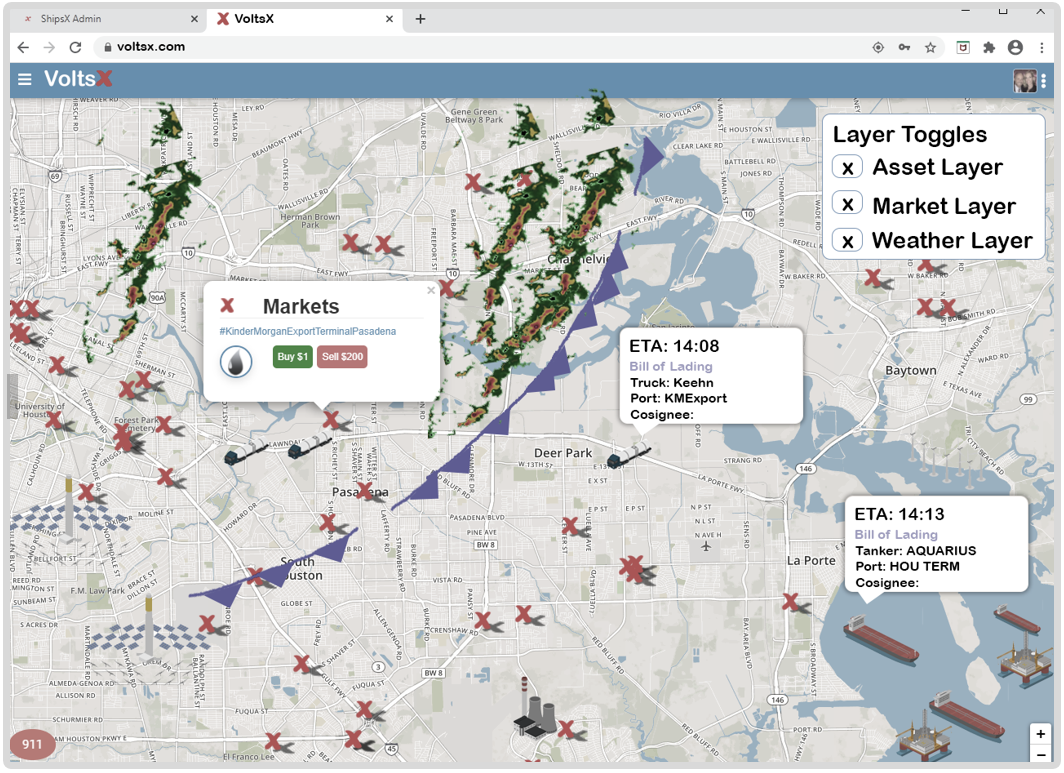Applications for geolocation platform markets and risk management are almost intuitive in some situations. We are all well aware of how asset platform shopping malls, traditional energy and even network television have been made obsolete by virtual platforms. Geolocation exchanges created by allow for a company to convert from an asset platform to a virtual platform market in minutes and defeat the forces and risks of deflation. Transitioning legacy in house database systems to platform technologies takes 5-10 years and most companies will have missed the war by the time they have implemented a new technology. For example, a solar home might buy a “floor” (see Terminology) to cover lost revenue during periods when power prices are soft-much as a farmer might buy a floor to protect against low wheat prices. But the full potential of these risk management tools is virtually unlimited. Here are several examples of how they can be used to improve a company’s bottom line:
Compensate for Loss of Demand
Erratic financial results can inflate a company’s cost of capital as lenders and shareholders demand higher rates of return on their money. To hedge profits against fluctuating asset prices, companies or individuals can use a wide variety of risk management products. A utility, for example, might purchase a floor that pays out if the market for power softens, while still retaining the upside if power pricing proves to be strong. Alternatively, the home owner could enter into a zero-cost collar to simultaneously protect and limit its revenues from price extremes outside a prescribed price band. Finally, the home owner could sell a cap against some of its power capacity, generating an additional and dependable revenue stream, regardless of asset price fluctuations.
Cover Excess Costs
In some cases, severe swings in the cost of assets reduce a company’s profitability-not by shrinking its revenues, but by driving up its costs. One example: a home owner may want to buy down the cost of his or her mortgage and home buy using . Home construction often gets delayed, and when it does, volatile mortgage rates can detract from critical budget management. Electricity bought at the last minute at inflated prices can increase costs beyond budget. By purchasing a power price swap from , the home owner, commercial and industrials can easily protect their budget. The swap ensures the price of electricity is constant throughout the year at an agreed upon level.

Hedge Fluctuations in Operating Budgets
To obtain favorable pricing, asset operators frequently commit to the purchase of capacity in advance. For any number of reasons-a downturn in the economy, perhaps, or an across-the-board corporate mandate to reduce costs-jobs sometimes get cut after these purchase commitments have been made. Companies that work with can purchase an option that will allow them to sell back capacity they do not use. This can help to offset any lost savings associated with market changes, job loss or location changes.
Reimburse “Lost Opportunity” Costs
In an ideal world, owners of power would sell, and home owners would purchase, the exact amount of electricity or assets they need. In the real world, weather, schedule changes, sales estimates, budget forecasts are often proved wrong by fluctuating demand, and generators find themselves sacrificing significant sales of power. For example, if a generator had superior assets. The generator may be used to protect themselves from these “lost opportunity” costs, the generator or home owner or community pool could purchase a risk management tool that would allow them to sell electricity to other coop pools or other generators rather than forego those electricity sales due to a lack of weather or demand.
Drive Sales
Many companies depend upon their electricity to drive sales and revenues. Often, though, companies are faced with the need to cut costs, and many times this will involve a reduction in their capex budget. By using electricity risk management, such cuts may not be necessary. A price floor, for example, could allow a company to lock in electricity sales at above-market prices, eliminating the need to reduce the service.
Diversify Investment Portfolios
Platform risk management tools offer fund managers, banks, reinsurance companies and other institutional investors an opportunity to increase their investment returns without assuming any increased risk, since returns generated from these contracts are not correlated with returns in other financial markets. Indeed, as the distributed generation market grows, it has the potential to function as a separate asset class. Financial swaps are a primary component of this asset class.

